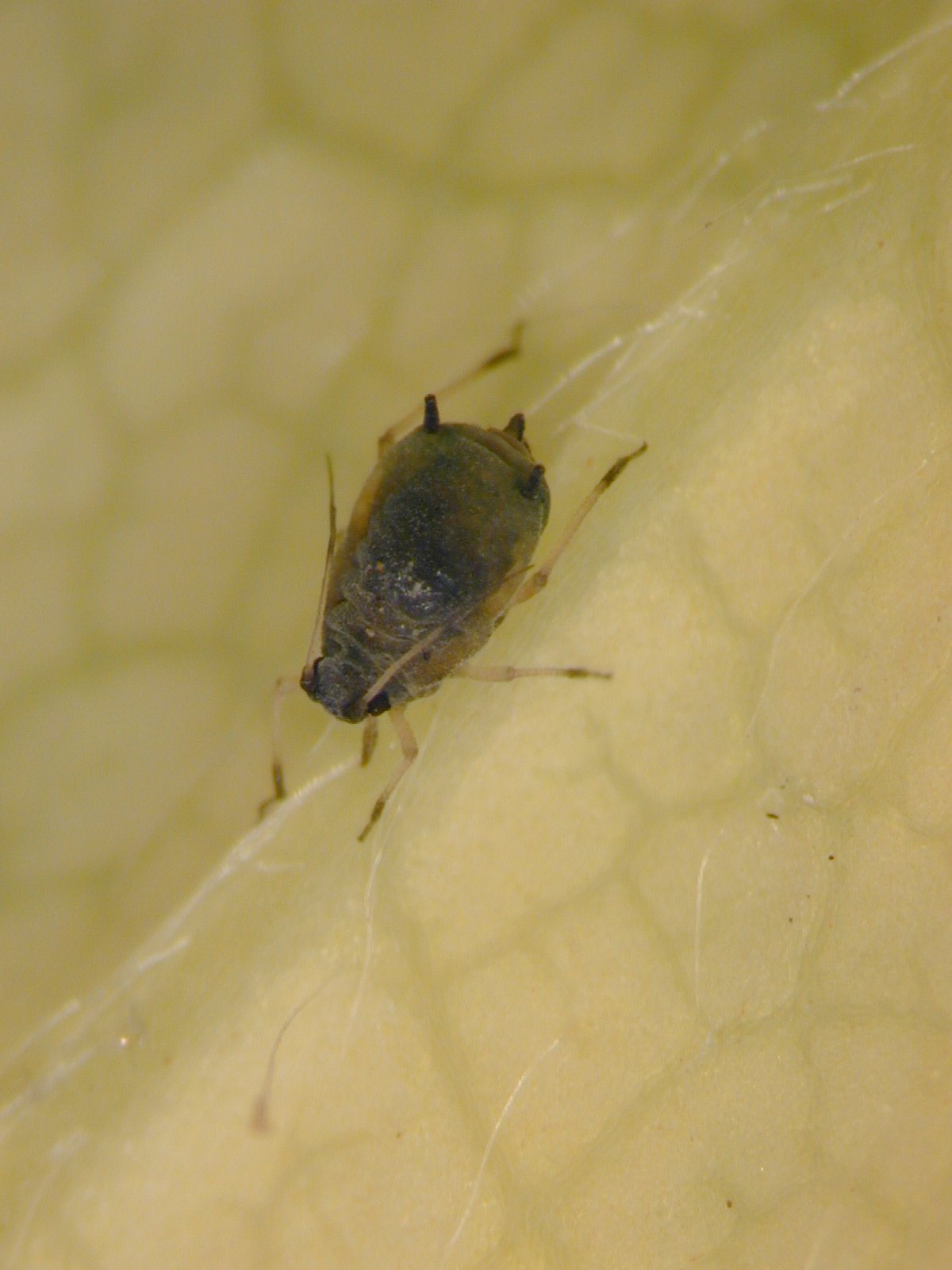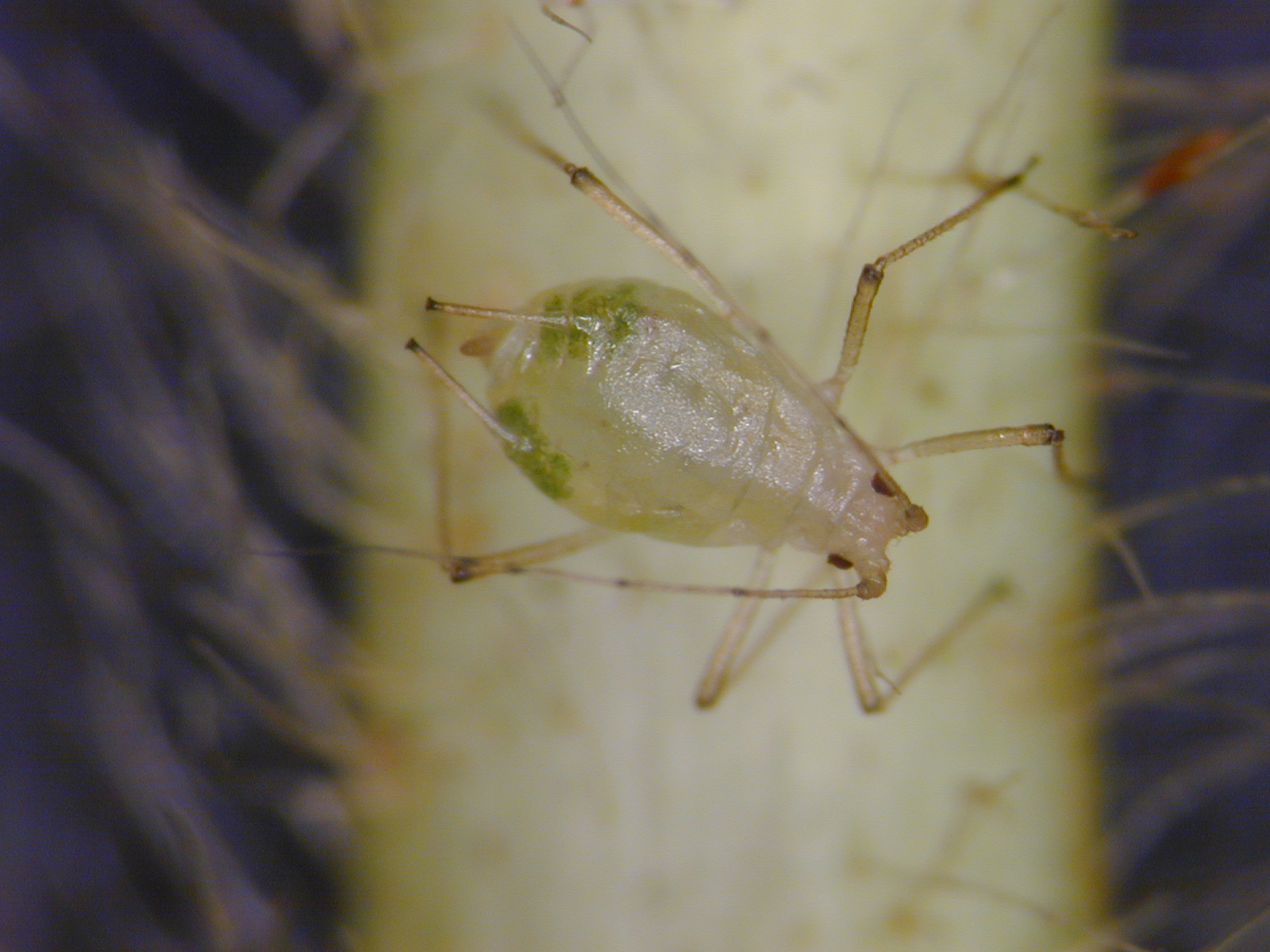Please click here to access the main AHDB website and other sectors.
- Home
- Knowledge library
- Aphids on strawberry: biology
Aphids on strawberry: biology
Find out about the biology and life cycle of different types of aphids on strawberry.
Biology
Aphids are soft-bodied insects that feed on plant sap. They can reproduce rapidly to build up their numbers on strawberry crops, leading to dense clusters of the insects under leaves, on flower stalks and in the crowns.
At key times in the life cycle, they occur as a mix of winged and wingless individuals. The life cycles of some aphid pests of other crops include the production of autumn sexual forms (males and sexual females) and migration to woody host plants to lay eggs to survive the winter, but the major strawberry aphid pests described here occur as asexual females and do not lay eggs on strawberry.
Most aphids on strawberry produce live young that immediately begin to probe and feed on the plants. Some aphid species overwinter on strawberry as wingless females, while others migrate to the crop in spring and summer as winged (alate) forms.
Pest identification and life cycle
Five species of aphid are commonly found on strawberry in the UK:
- Strawberry aphid
- Potato aphid
- Melon and cotton aphid
- Glasshouse-potato aphid
- Shallot aphid
Many other species occur occasionally.
Aphid species cause different types of damage and may require varying control approaches. For this reason, it can help to identify which species are present and their relative incidence.
Identification
Identification of the aphid species is helped by their appearance, distribution on the plant and the damage they cause. Close examination with a hand lens may sometimes be required to confirm identification. The key features that help identify aphids to species are shown below. The species described may be found as adults or immature stages (nymphs) on strawberry.
General aphid features useful in identification are listed below.
Strawberry aphid features
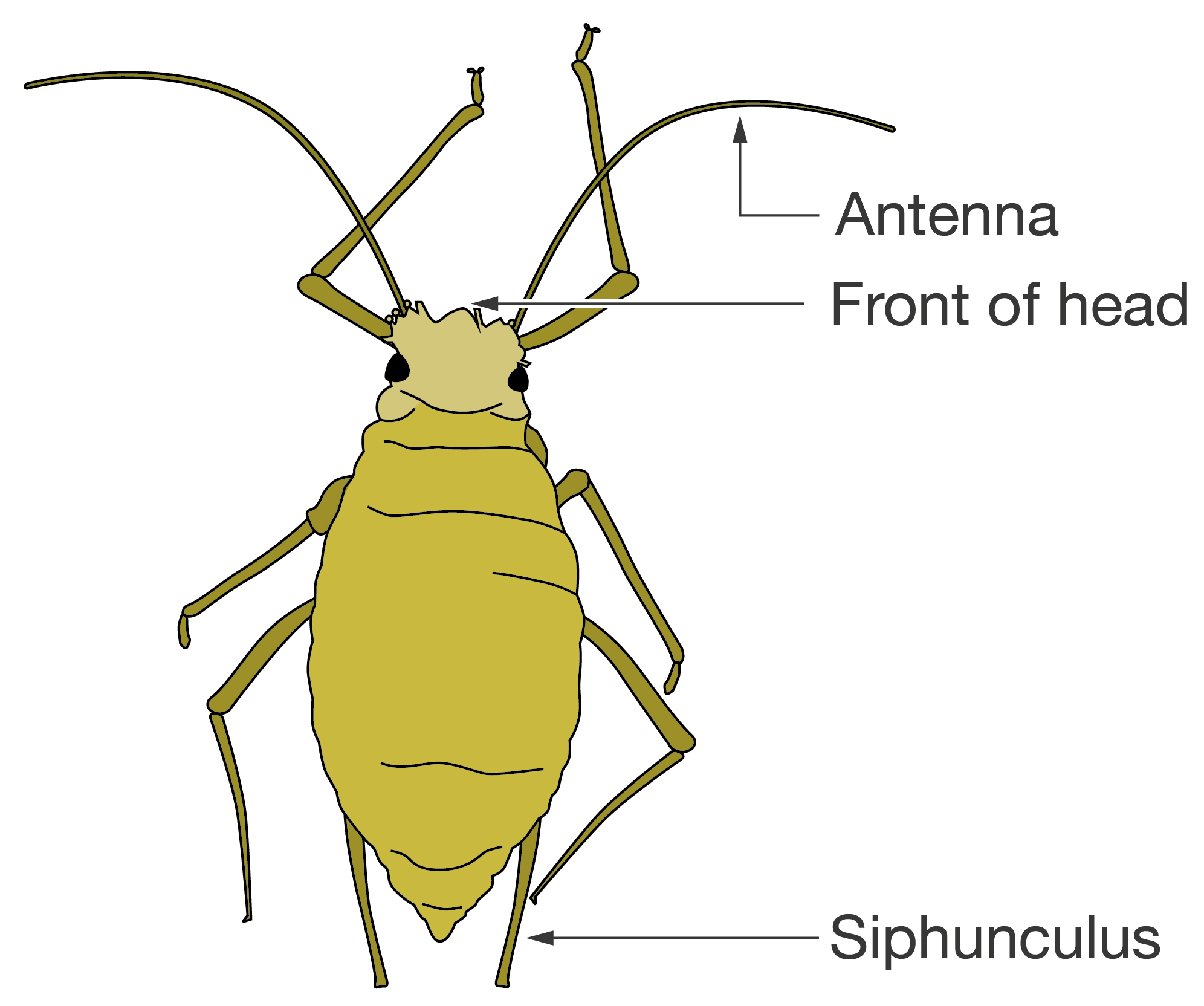
Image copyright AHDB.
- Adults are small (up to 2 mm long), whitish green with red eyes
- Their bodies are covered with fine-knobbed (capitate) hairs (and this is the only ‘hairy’ aphid species commonly found on strawberry plants
- The siphunculi (a pair of tubes projecting from the rear abdomen of the aphid) are moderately long
- They are usually found on the undersides of leaves and, when populations in the crop reach high levels, on leaf stalks
- Nymphs or adults may occur on strawberry at any time of the year, including on overwintered crops
Strawberry aphid
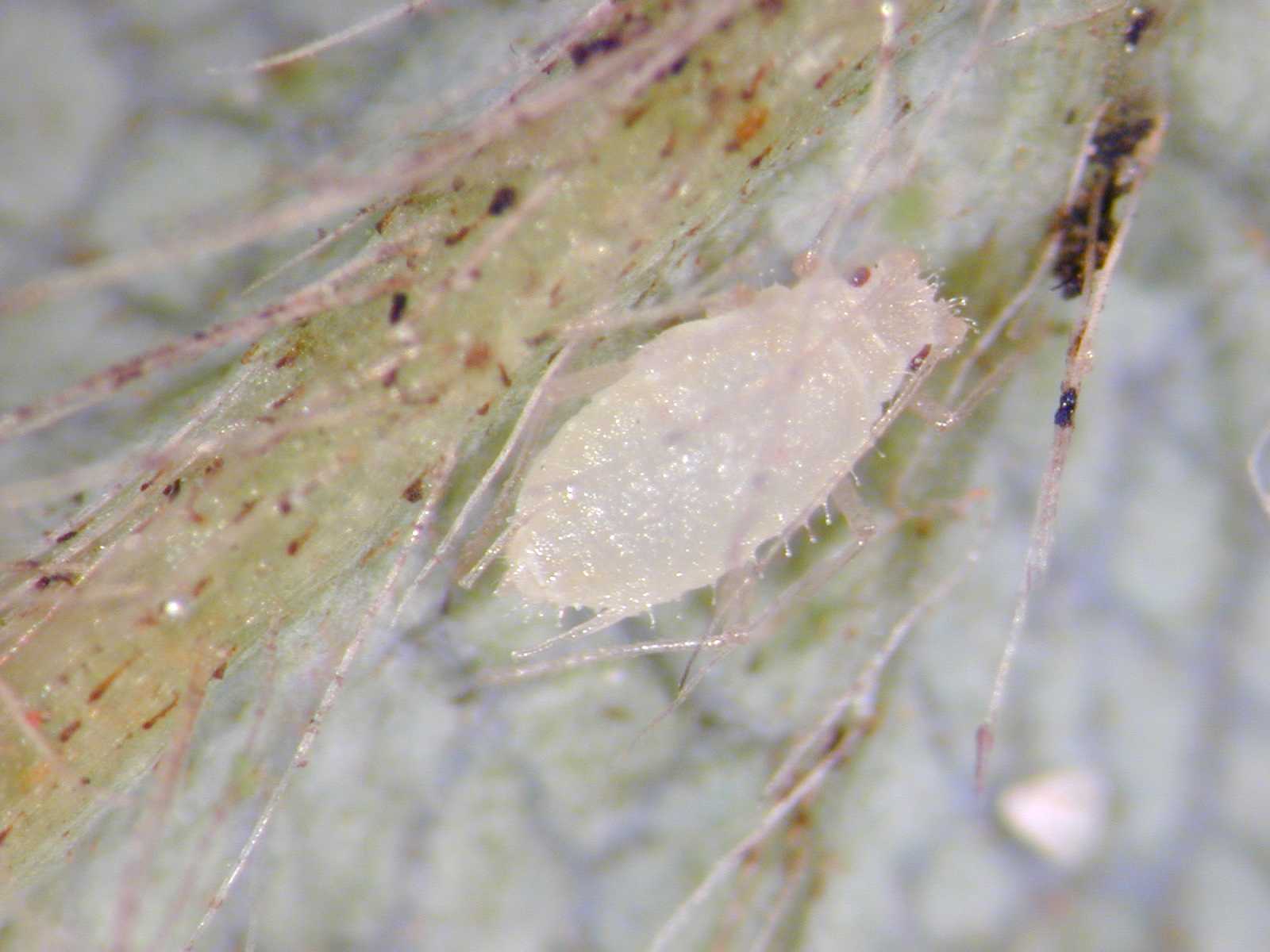
Image copyright NIAB EMR.
Diagram of strawberry aphid siphunculus (left) and forehead (right). Note the presence of knobbed hairs, which sparsely cover the aphid’s body and are particularly easily visible on the forehead and along the edges of the body
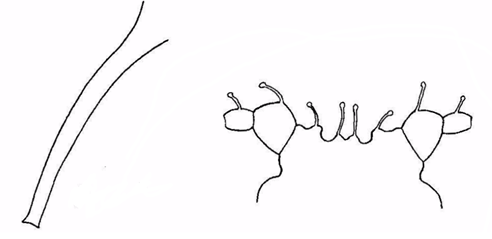
Image copyright AHDB.
Adults are large (up to 4 mm long), with very long legs and antennae. Siphunculi are also long, and sometimes dark-tipped (See first image below). Individuals may be yellowish green, deep green or pink, and sometimes multiple-coloured forms occur within one colony (see second image below). Potato aphid may be found feeding on strawberry at any time of the year, but crops are particularly susceptible to attack by this species in the spring. Winged adults tend to colonise the crop, starting from April and May, and this can lead to rapid build-up of populations by early summer.
Potato aphid: top) Close-up of wingless adult surrounded by nymphs; bottom) Mixed pink and green forms on a strawberry leaf
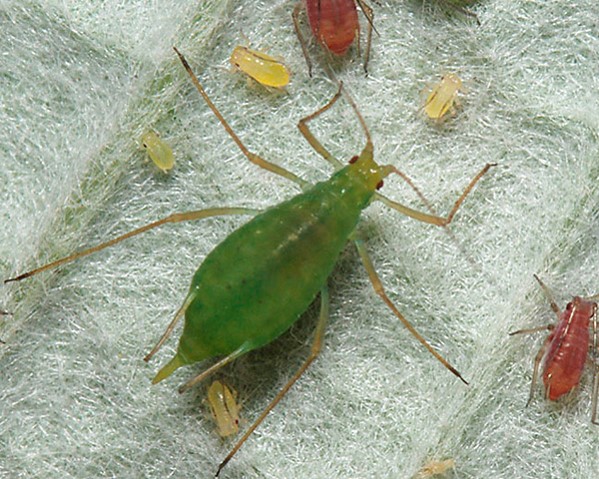
Image copyright Influential points
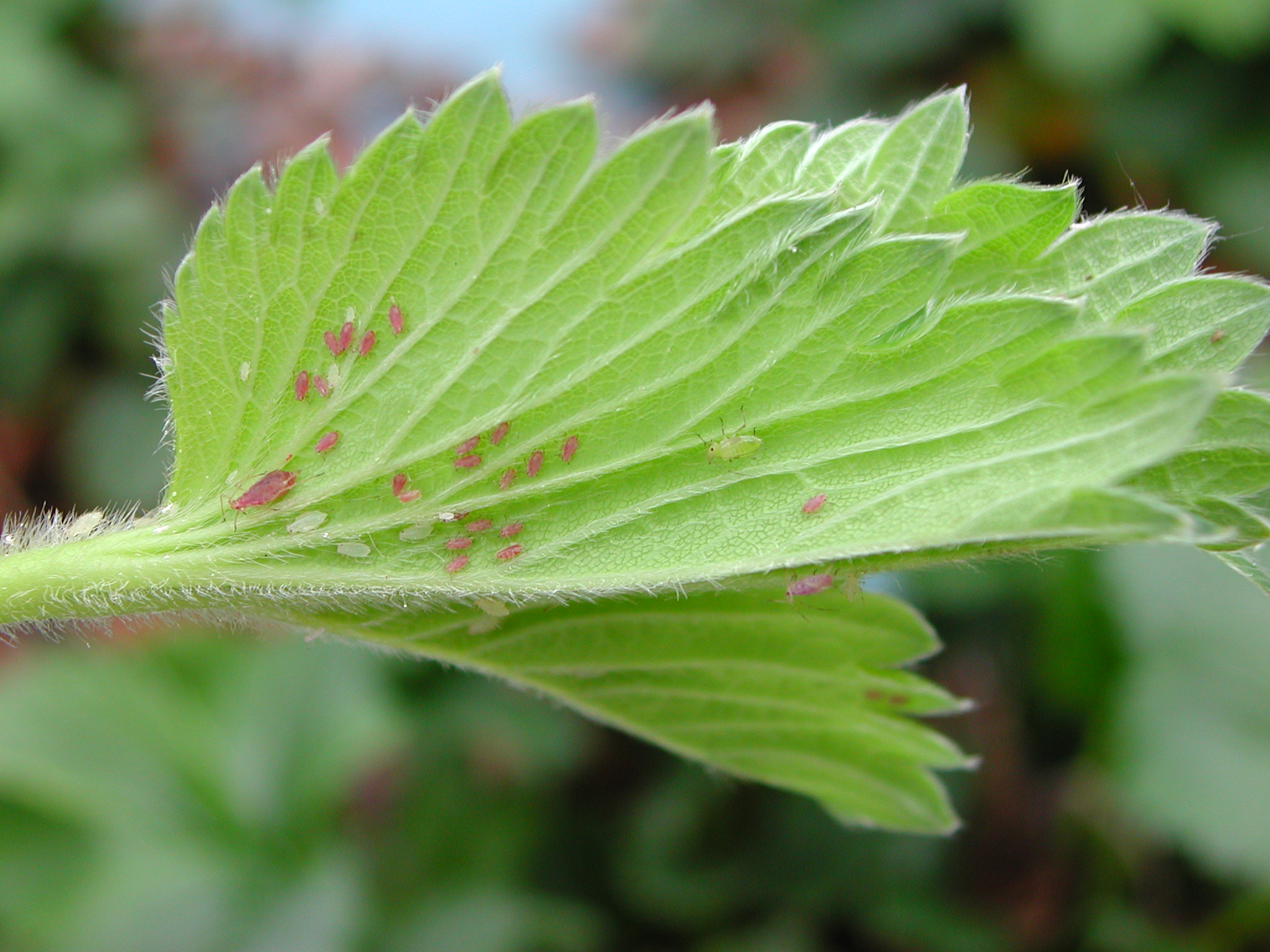
Image copyright NIAB EMR.
- These aphids are small (up to 2 mm, but their size varies, and adults may be less than 1 mm), with rounded bodies and relatively short legs and antennae
- They are highly variable in colour, from bright yellow, to dark green or black, with smaller individuals characteristically being lighter and larger individuals darker (below)
- The legs are lighter, but not uniformly white, and in common with other Aphis species, melon and cotton aphids have a flattish (slightly domed) forehead between the antennae
The aphid forms dense colonies that secrete copious honeydew. Insecticide-resistant strains of this species are widespread and growers may therefore have difficulty achieving effective control using conventional sprays.
This aphid species has a wide host plant range and can move from other protected crops and weeds to colonise strawberry. Winged forms are likely to arrive in the crop during spring and early summer and may potentially lead to build-up of large colonies.
The species is also able to persist in smaller numbers under protection during the winter.
Melon cotton aphid
Image copyright NIAB EMR.
- Adults are yellowish green, up to 3 mm body length, with long, thin, slightly tapered, dark-tipped and flanged siphunculi
- The nymphs are shiny green, with a rather bright green or yellow patch at the base of each siphunculus (see below)
- This species may occur in the crop at any time of the year but is usually found in low numbers
Glasshouse-potato aphid
Image copyright NIAB EMR.
- Adults are small (up to 2.5 mm), pale brown or yellowish or greenish brown
- The front of the head has little projecting knobs between the antennae. The siphunculi are distinctly swollen towards the tip
- This aphid is mainly found in the growing points of plants, often alone or in small numbers, and can be difficult to find
- This species tends to colonise the crop during the autumn and is most likely to be found feeding on strawberry during the winter and spring
Shallot aphid

Image copyright Influential points.
Diagram of shallot aphid siphunculus (left) which is distinctly swollen towards the tip and the small projections either side of the forehead (right), next to the bases of the antennae
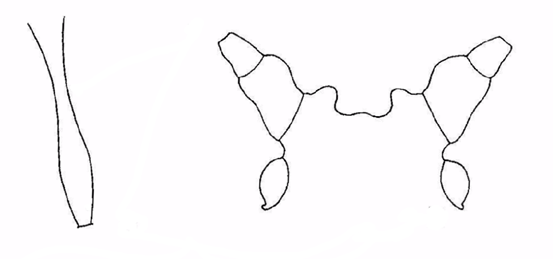
Several other species of aphid can occasionally be found on strawberry.
Acyrthosiphon malvae rogersii – a medium-sized green aphid with long, pale siphunculi, often occurs in mixed colonies with the potato aphid.
Violet aphid (myzus ornatus) – occasionally found on strawberry, more frequently on protected crops. This species has a very wide host range and is of only minor importance on strawberry. Adults are small, pale brownish or dull green, with a distinctive dark pattern of dots and streaks on the body. The siphunculi are pale, moderately long and cylindrical. The forehead has distinct raised knobs between the antennae, similar to those of the shallot aphid.
Black bean aphid (aphis fabae) – sometimes found in small colonies. This aphid has a coal-black body (nymphs and adults), a flattish, slightly domed head between the antennae (a characteristic of Aphis species) and distinctive white legs.
Strawberry root aphid (aphis forbesi) – a small blue-green aphid which feeds upon both strawberry foliage and roots. The yellow rose aphid (rhodobium porosum) is also found. Both are common pests of strawberry in continental Europe.
Topics:
Sectors:
Tags:


